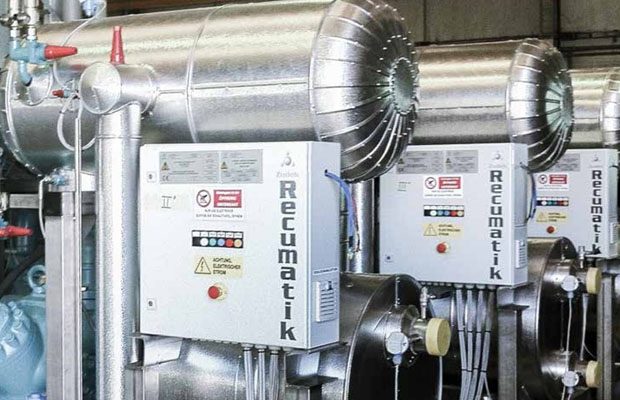Products
Chiller Plant Optimisation
Chiller Plant Optimisation is not a physical product it is a live strategy. The product can be a CPU programmed to interpret feedback from a building management system or a strategy programmed into the BMS itself, calculating the best operating condition for each component of the chilled water plant to achieve the highest overall plant efficiency.
To successfully implement full optimisation requires a detailed understanding of the building characteristics, cooling load profile and process application. This is a fundamental requirement to match the right chilled water system design, chiller, cooling tower (if chillers are water-cooled) and associated pumps.
Benefits of full optimisation using the correct components for the central plant are:
- Reduced carbon footprint
- Reduced running costs
- Increased system stability and reliability
- Reduced service and maintenance costs

HFO & HFC Chillers
HFO (Hydrofluro-Olefins) are the new generation of synthetic refrigerants being used in refrigeration and air-conditioning equipment. They are designed to significantly reduce the Global Warming Potential of RAC equipment below that of current HFC(Hydrofluorocarbon) refrigerants.
HFC refrigerants and blends containing HFC’s are subject to Australia’s Ozone Protection & Synthetic Greenhouse Gas Management (OPSGGM) act. Australia is signatory to an international agreement to an 85% phase-out of HFC refrigerants by 2036 in developed countries. There is an ever-increasing amount of equipment available on HFO refrigerants, however there are still a number of applications that are suitable for HFC equipment where an HFO alternative is not yet available
- Air Cooled
- Cooling only
- Cooling only remote condenser
- Cooling only Adiabatic (using evaporatively cooled condenser air to increase efficiency)
- Water-Cooled
- Cooling Only
- Heat pump (Refrigerant)
- Heat pump Geothermal
- Heat recovery (6-pipe)
- Heat Pump
- 2 pipe Multi-function (Heat Pump with Heat recovery)
- 4 pipe Multi-function (simultaneous heating and cooling)
- Compression Type
- Positive displacement compressors incl. Scroll, Screw and Reciprocating types with Inverters or fixed speed drive
- Dynamic displacement compressors incl. Centrifugal Oil Free or conventionally lubricated with Inverters or fixed speed drive
Natural Refrigerant Chillers
The use of natural refrigerants in chillers is becoming increasingly popular largely due to being seen as more environmentally friendly. They have no Ozone Depletion Potential and zero Global Warming Potential and whilst there is some manufacturing process required to make them useful as a refrigerant, they are not synthetic gases therefore not subject to Synthetic Greenhouse Gas legislation.
Previously, natural refrigerants have not been as easy and convenient to use as the Synthetic refrigerants, however technology, training and new safety measures mean that in the correct application they can offer clean efficient solutions. Considering, 3 generations of Synthetic gases have been phased out since the 1980’s due to environmental concerns, Natural refrigerants can offer end users a stable sustainable solution in the right application.
Natural Refrigerant Chillers include:
- Co2 (R744) Air-cooled water-cooled, heat recovery and heat pump
- Ammonia (R717) Air-cooled, water-cooled, heat recovery, heat pump, absorption
- Water (R718) Air-cooled high temperature chilled water for data centres and process cooling
- Propane (R290) Air-cooled and generally outside installation only